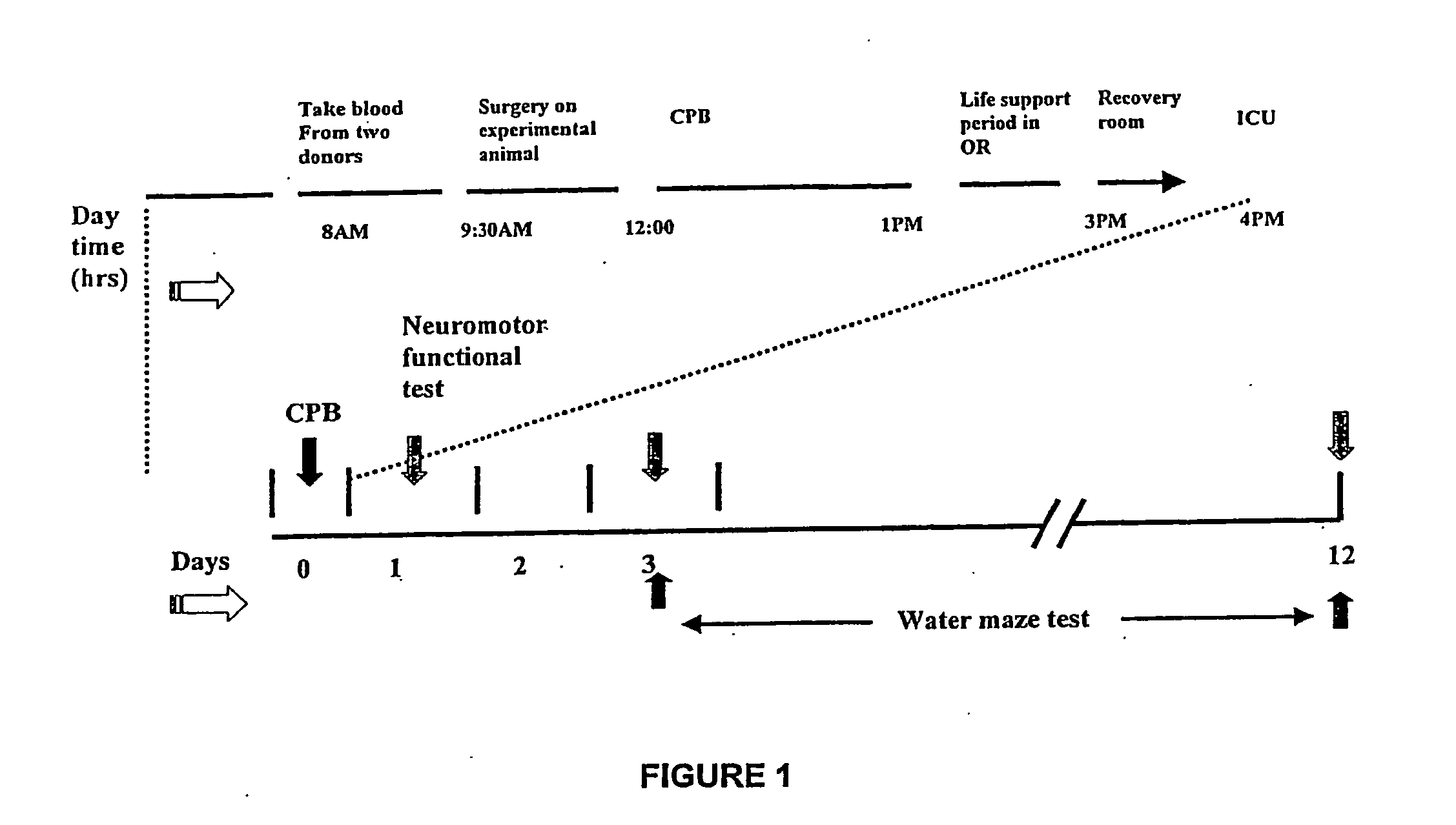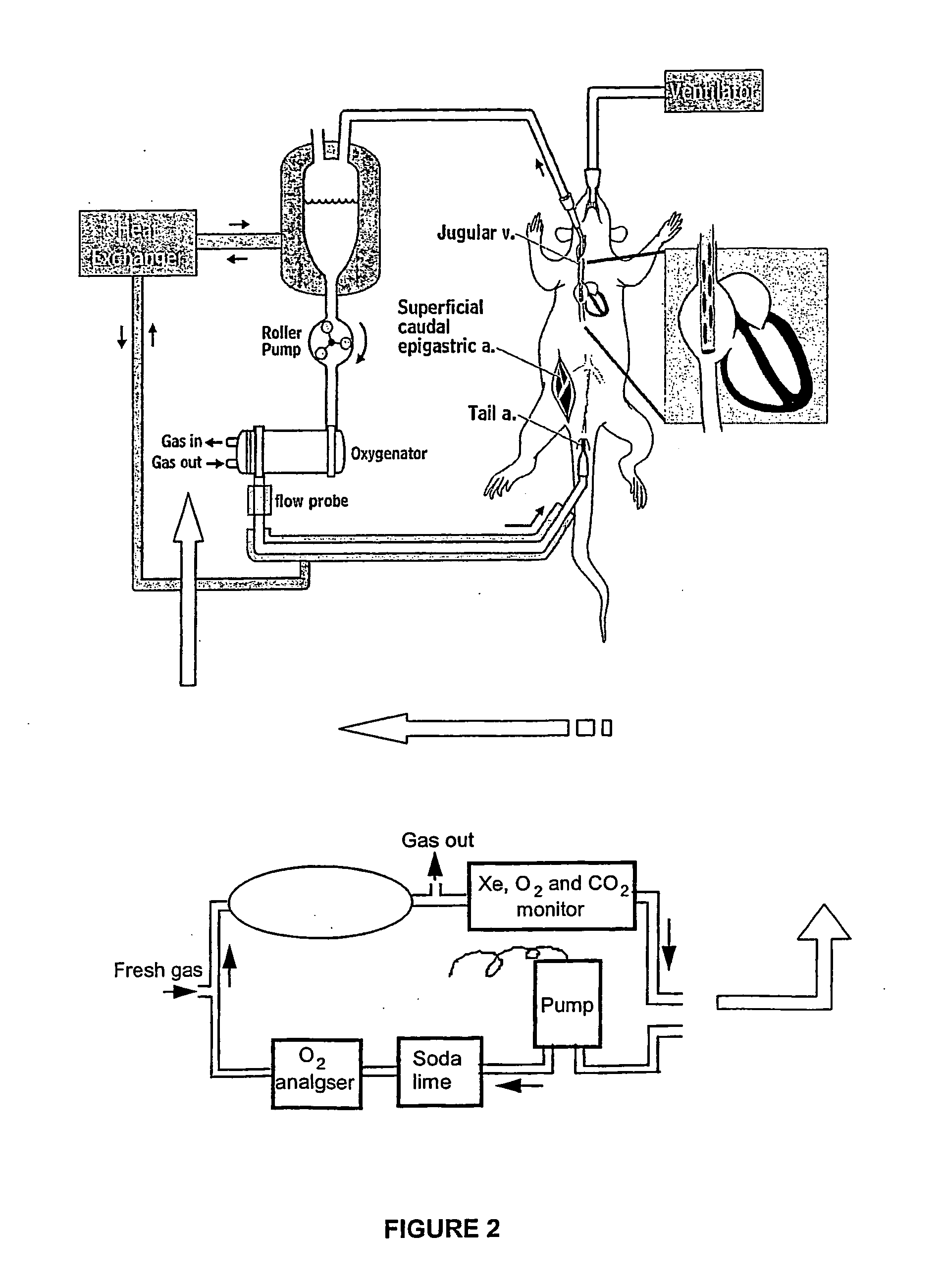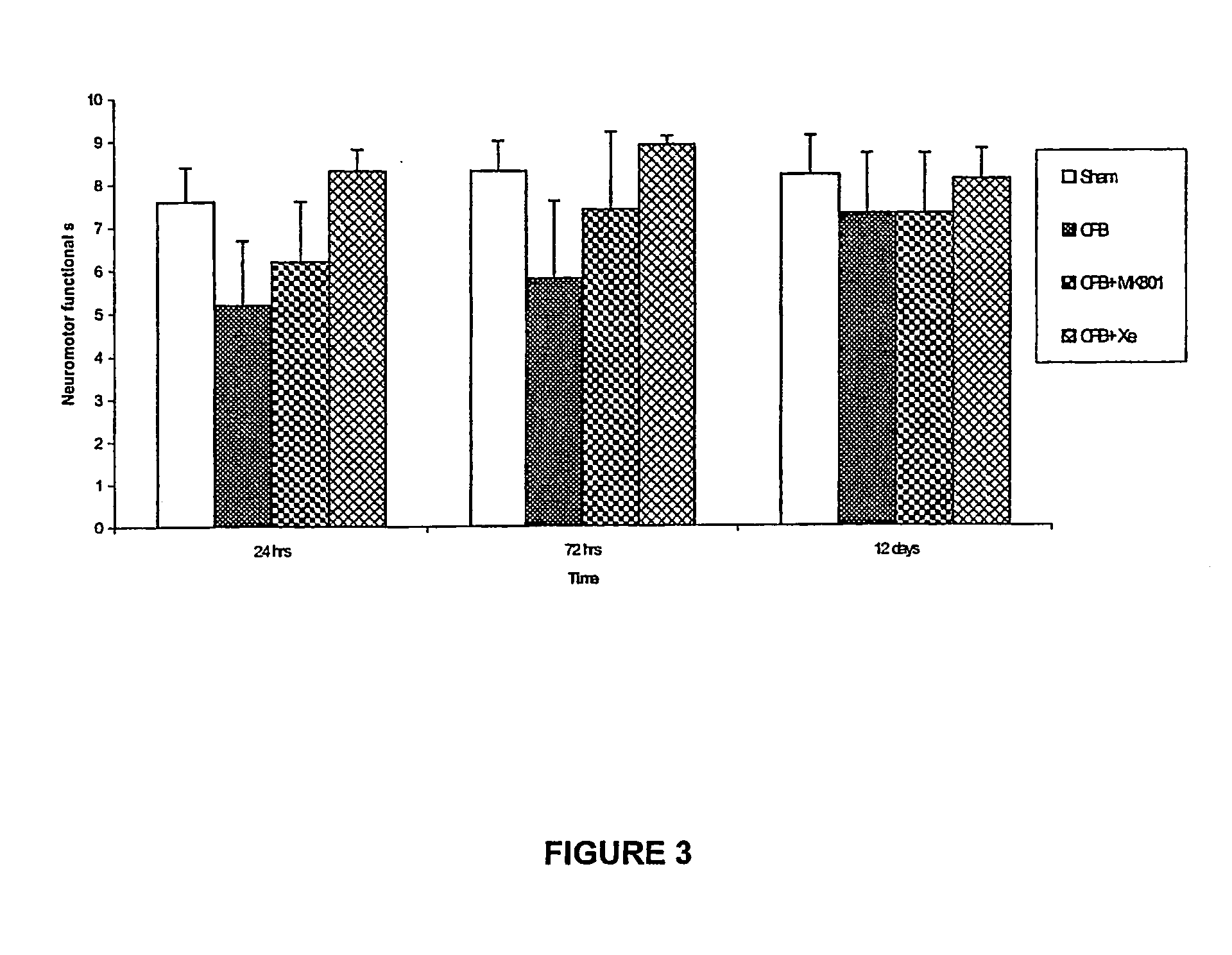Use of xenon for the control of neurological deficits associated with cardiopulmonary bypass
- Summary
- Abstract
- Description
- Claims
- Application Information
AI Technical Summary
Benefits of technology
Problems solved by technology
Method used
Image
Examples
examples
[0082] Surgical Preparation and Cardiopulmonary Bypass (CPB)
[0083] The methodology of the CPB model used in the current study has been previously reported (Anesthesiology 2001, 95:1485-91). Briefly, anesthesia was induced in male Sprague-Dawley rats (12-14 weeks, 350-380 gm; Harlan, Indianapolis, Ind.) with 5% isoflurane in oxygen-enriched air in a plastic box. Following orotracheal intubation with a 14-gauge cannula, the lungs were mechanically ventilated (40% O2 / balance N2) to maintain a PaCO2 of 36-42 mmHg. During surgical preparation, anesthesia was maintained with 2.0-2.5% isoflurane and the rectal and pericranial temperatures were monitored and servo-controlled at 37.5±0.1° C. (YSI 400 series thermistor and 73ATA Indicating controller; YSI, Yellow Springs, Ohio) with a heating blanket and convective forced-air heating system. The superficial caudal epigastric artery, a branch of a femoral artery, was cannulated with PE-10 tubing for monitoring mean arterial pressure (MAP). Du...
PUM
| Property | Measurement | Unit |
|---|---|---|
| temperature | aaaaa | aaaaa |
| temperature | aaaaa | aaaaa |
| temperature | aaaaa | aaaaa |
Abstract
Description
Claims
Application Information
 Login to View More
Login to View More - R&D
- Intellectual Property
- Life Sciences
- Materials
- Tech Scout
- Unparalleled Data Quality
- Higher Quality Content
- 60% Fewer Hallucinations
Browse by: Latest US Patents, China's latest patents, Technical Efficacy Thesaurus, Application Domain, Technology Topic, Popular Technical Reports.
© 2025 PatSnap. All rights reserved.Legal|Privacy policy|Modern Slavery Act Transparency Statement|Sitemap|About US| Contact US: help@patsnap.com



